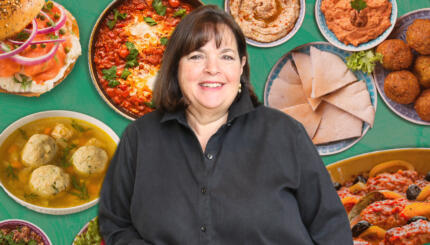Yotam Ottolenghi, Alon Shaya, and Michael Solomonov, all James Beard award winners, are seen as the stars of the new Israeli cuisine. But these men stand shoulder-to-shoulder with three female food writers and chefs who play their own important role in drawing attention to Israel’s food. In their latest cookbooks, which come out this September, Einat Admony, Janna Gur, and Adeena Sussman — culinary stars in their own right — let you into the home kitchens and open-air markets of Israel to show you how to recreate that delicious food in the United States or anywhere.
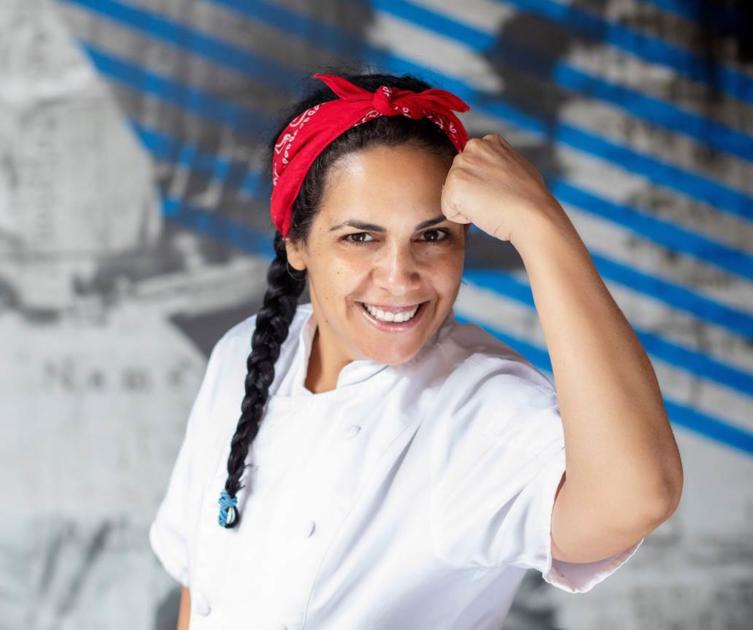
For the last 14 years, Admony has shared the vibrancy of Israeli food with the American market via her appearances on the Food Network’s Chopped, her first cookbook, Balaboosta, and her many restaurants, including Taim, Kish-Kash, and Balaboosta. Taim is described as having the best falafel in New York, and many credit Admony with bringing sabich, the Iraqi sandwich stuffed with fried eggplant, hard-boiled eggs, and hummus, to America. Her cauliflower is famous, and she has introduced wide swaths of New Yorkers and visitors alike to Israeli flavors that they have fallen.
Admony’s co-author, Janna Gur, opened the door to the bubbling food scene developing in Israel in her The Book of New Israeli Food, published in 2007, years and years before Ottolenghi’s acclaimed Jerusalem hit American bookstores. The Book of New Israeli Food is part cookbook, part photo essay, with recipes far less intimidating than other Israeli cookbooks but sharing a similar narrative. In that debut book, Gur shined a light on food that, until then, had received scant attention, putting the cuisine that was evolving in Israel onto the global food map.
The Nosher celebrates the traditions and recipes that have brought Jews together for centuries. Donate today to keep The Nosher's stories and recipes accessible to all.
Gur and Admony’s forthcoming cookbook, Shuk: From Market to Table, the Heart of Israeli Home Cooking, is filled with recipes built around tahini, labneh, condiments, salads, kitzitzot (ground patties, meatballs, or burgers that are the pride of the Israeli home cook), and all manner of chicken dishes, some with roots in Iraq, others from Persia, and one perfumed with orange blossom water.
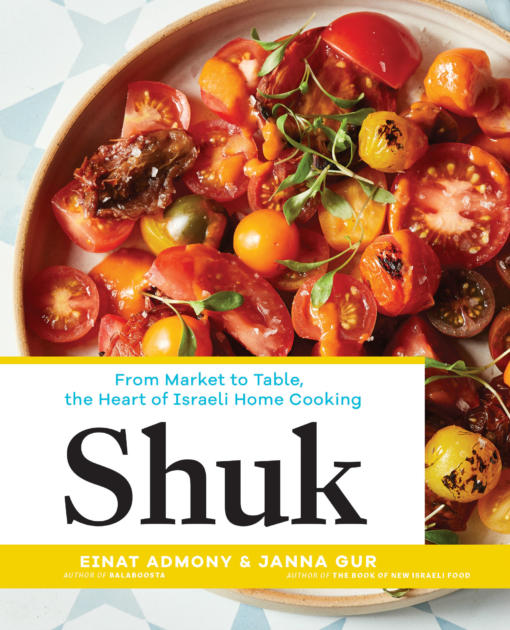
It is also a celebration of the shuks, or open-air markets, dotting the land of Israel. Admony and Gur describe their favorite shuks in Tel Aviv, Jerusalem, Akko, and Haifa and the shops they frequent in each of them. Do you want the best stuffed filo pies in the Carmel market in Tel Aviv? Or the most flavorful chraime, a North African fish stew, in Jerusalem’s Machne Yehudah market? They tell you exactly where to get what you want in this cookbook-cum-travel guide.
And then there’s American-born Adeena Sussman, who developed a name for herself in the United States as a writer for food publications like Gourmet, Food & Wine, and Travel and Leisure. She’s co-authored and collaborated on more than a dozen cookbooks, including two New York Times best-selling cookbooks that she wrote with the model Chrissy Teigen. While technically conceived in Israel, Sussman’s feet were solidly planted in the States — that is, until she fell in love with an American-Israeli man and left her New York life behind for Tel Aviv.
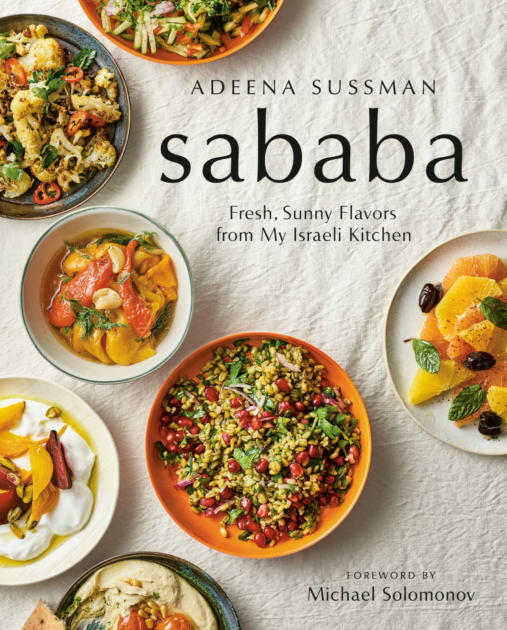
Sussman admits to worrying about the impact her move to Israel would have on her career as a food writer. But rather than sputter into oblivion, her writing sparkled, taking on new power and passion. She lives a short walk from the Carmel market and begins each day there, walking the alleyways just as the vendors are setting out their wares. She says that she moved to Israel for love but “she stayed for the shuk.”
It’s her love for that shuk that inspired her newest book, Sababa: The Fresh Sunny Flavors of Israeli Cuisine. The book begins with recipes for some of the most popular spice mixes and sauces in Israel, like a lemon spread made with lemons, garlic, kosher salt, jalapeno, and oil to use on… everything. She adds it to pasta salad, sandwiches, and kebabs as a natural flavor enhancer. The book ends with a shopping guide full of resources Americans can use to access some of the harder to find ingredients like freekeh, pomegranate molasses, and the pickled mango condiment, amba (which, for the record, you can now get at Trader Joe’s).
Sababa also includes recipes for American classics made using Israeli ingredients in fresh new ways, like her recipe for all-American granola flavored with tahini, olive oil, and silan, a sweet syrup made from dates. You’ll also find recipes for her Pomegroni, a cocktail of pomegranate juice, sweet white vermouth, dry gin and bitters and a coffee cake enriched with labneh and flavored with halvah and Baharat, a spice mixture of cinnamon, allspice, nutmeg, cloves, cardamom, ground black pepper, and ginger.
Each book introduces the reader to foods and ingredients from different cultures. Admony has fallen for Ethiopian food which, “…reminds me of my Yemenite background.” Her recipe for Doro Wot, an Ethiopian chicken dish flavored with ginger, cardamom, turmeric and fenugreek, and braised in a pot with hard-boiled eggs, results in a tender and moist bird, with juices that can be mopped up with the Ethiopian spongy flatbread, injera, or the similar Yemenite lochoh. She dedicates a whole chapter to the proper way to make couscous from scratch and suggests and offers recipes for some of the dishes and sauces that might accompany it.
In both books, the authors teach the reader how to make classic Israeli dishes, like a crisp, flavorful schnitzel. “I respect classic dishes, done perfectly,” says Sussman, “like the perfect challah or schnitzel. By learning how to make these essential dishes, I will help create confident cooks.” Conversely, though, she believes that when cooking, “…there are no mistakes. Things unfold. Some of the best foods are happy accidents.”
In recent years, the selection of Israeli cookbooks available in the United States has grown rapidly. Why the heightened interest? Janna Gur has a theory:
“Israeli food is a cuisine in the making,” Gur says. “It is a combination of food traditions from different immigrant groups coupled with a total lack of commitment to tradition.” And she adds, “As a nation, we don’t have an age-old venerable cooking tradition that we need to honor. We can do whatever we want.”
Philosophy aside, Israel also seems, at least to Gur, to be in the right place at the right time, as far as food is concerned. Israeli food is vegetable-forward, she points out, and this is how the world wants to eat today. The focus on vegetables and salads contribute to its popularity.
And finally, Gur shared, Israeli chefs are great communicators. “They bring Israeli foods, like hummus, a classic Levantine dish that was always there, to other parts of the world. Israelis came across it, elevated it to an iconic status and exported it to the world.” The same could be said about burekas, shakshuka, and of late, arayes, (a pita stuffed with meat and then grilled) that is having a special moment.
It’s hard to know what will be next in the quickly developing Israeli food scene. And while it’s obvious the recipes and flavors of their cookbooks shine and delight, the contributions of these three powerhouse women is so much deeper than these collections alone.
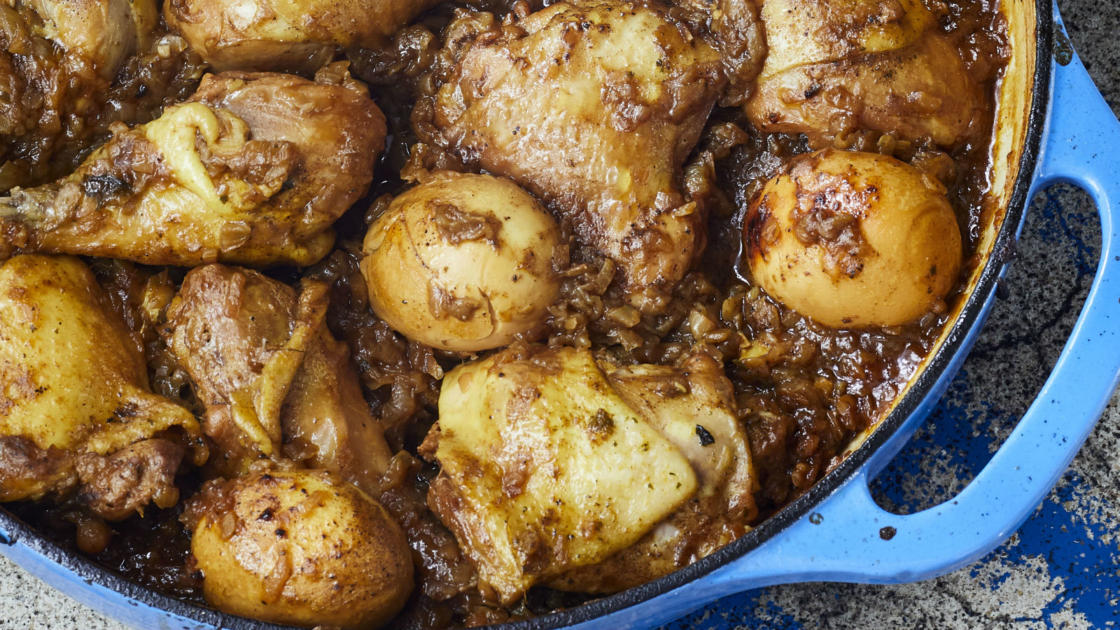
Make sure to check out the Doro Wot (Ethiopian chicken) and lachoh (Yemenite spongy flatbread) recipes from Admony & Gur’s book, Shuk.

